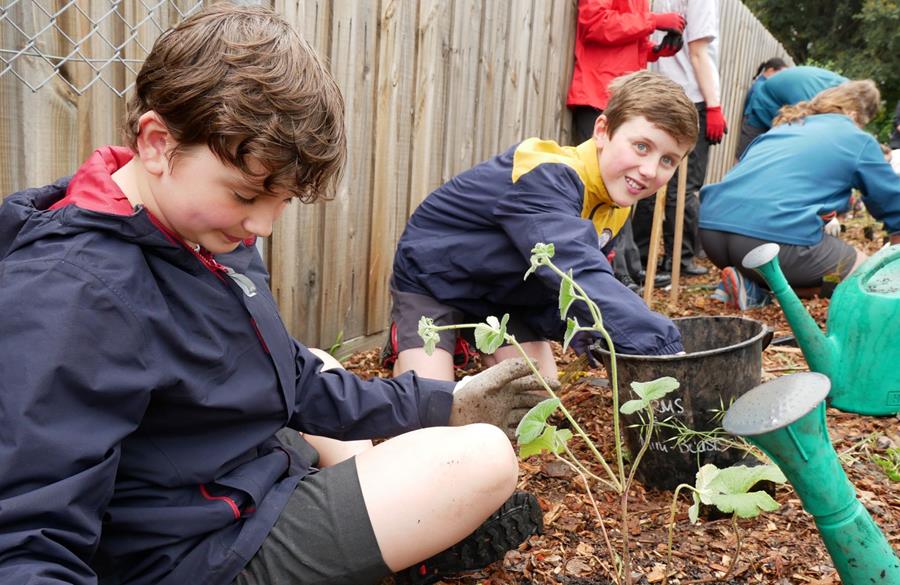
A new story
This pic is what a CERES geography, science, maths, design and ethics classroom looks like.
This is CERES Schools for Wildlife and it happens in schools all over Melbourne.
This session last week was at Preston High, where Year 7 students turned an unused part of their schoolyard into a wildlife garden.
In the weeks before planting day these students conducted habitat surveys to learn about their local biodiversity and why some of the native mammals, birds, reptiles and insects had gone or were disappearing.
They learned how groupings of local indigenous plants could create habitats and help bring some of these missing species back.
Before they planted they tested the PH, soil type and water absorption, they learned to use gardening tools and how to prepare the ground.

And in the following months after this planting day they’ll learn to care for their garden and monitor the animals that come back.
Why do we teach biodiversity in the urban neighbourhoods these children live? Why do we revegetate a strip of land between a fence and a brick wall in an unused corner of Preston High?
It’s part of telling a new story; a story that our city and “the environment” are the same place, that the fates of Preston and Wilson’s Prom, of humans and humpbacks are intimately connected.
Recently, Greater Melbourne’s thirty two local governments committed to doubling Melbourne’s tree canopy by 2040.
In an effort to combat the heat island effect caused by our buildings and roads Melbourne’s councils are creating the world’s largest urban forest.
And as we invite the forest back into our city we are writing a new chapter in our city’s story, a story based on reciprocity, a story of a city beginning to understand its place within nature.
In a little over four years these Year 7 students will walk out of Preston High, past their beds of wallaby grass, sweet bursaria, flax lilies, rock correas and hop goodenias and they will leave their garden with the understanding, the knowledge and the skills to begin telling their part in this story.
CERES Fair Food donates 100% of our profits to CERES and our School of Nature and Climate – that’s over $2 million and 1 million students and counting.

Postcards from the front door
Do you ever feel like dropping us a line – telling us something about your Fair Food journey?
These are the cardboard inserts we use to stop produce and groceries falling through the bottom of your Fair Food box.
Instead of sending out “How was your order emails?” or asking you to do an online survey we provide these handy feedback cards.
There’s no algorithm collecting your info here just our drivers collecting your empty Fair Food box and cooler from your front door.
When your cardboard feedback comes back to the Fair Food warehouse we hang them up on the wall and everyone’s excited to read what people have to say – it’s like getting a very large postcard.
So if you want to tell us something, anything, write us a note, draw a picture and leave it out with your empty Fair Food box and cooler.
Have a great week
Chris


